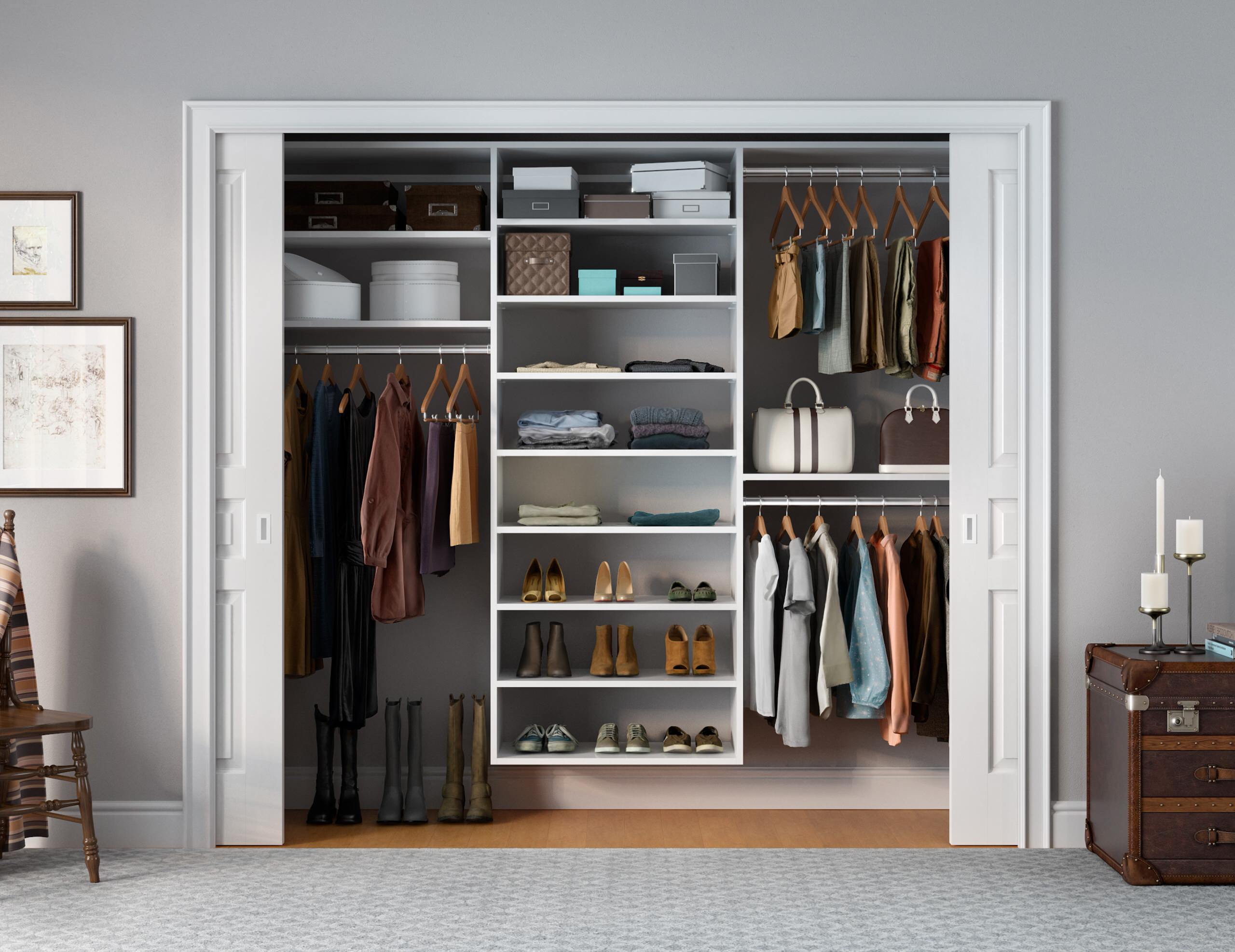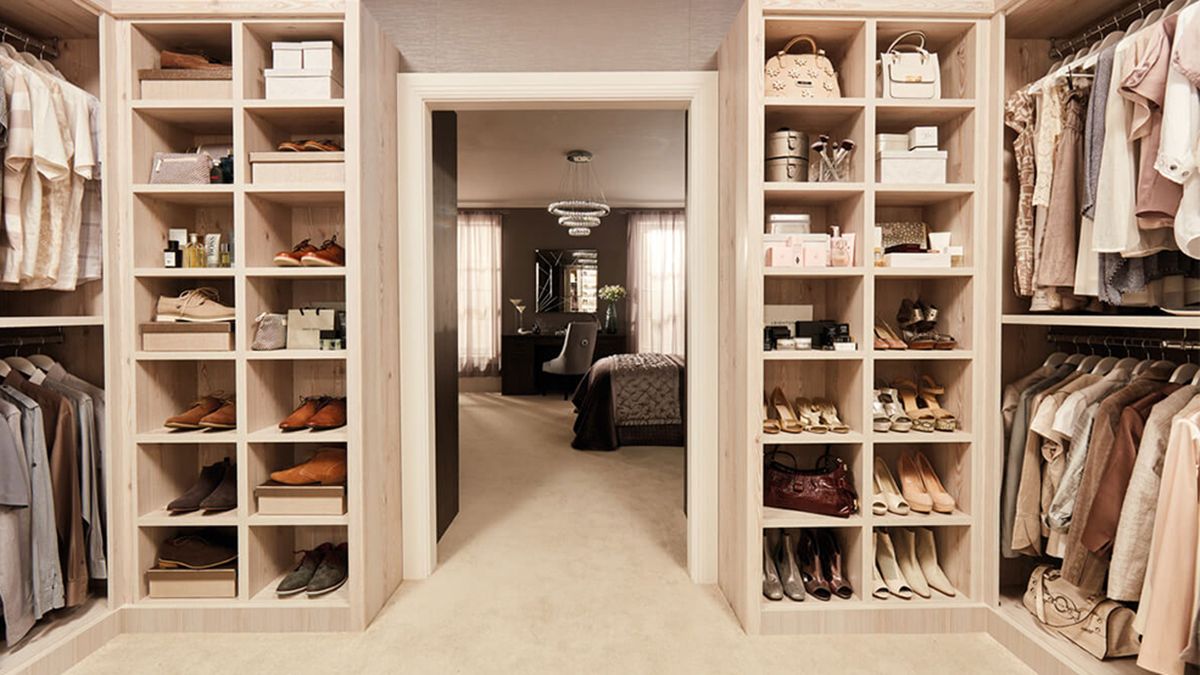Maximizing Space and Functionality

Small closet spaces present a unique design challenge, requiring a focus on maximizing storage capacity and functionality. Efficient design is crucial to making the most of limited space and creating a clutter-free and organized environment.
Space-Saving Techniques for Small Closets
Effective utilization of vertical space is a key principle in small closet design. Vertical storage solutions, such as tall shelves, hanging rods, and stackable bins, optimize space by utilizing the height of the closet. Multi-level shelves allow for the separation of items by category or frequency of use, providing a clear overview of the contents. Pull-out drawers provide easy access to stored items, minimizing the need to move or rummage through piles of clothing or accessories.
Maximizing Storage Capacity and Accessibility
Maximizing storage capacity while maintaining accessibility and organization is a balancing act. Implementing a system for folding and storing clothes, such as the KonMari method, can increase storage density. Utilizing clear storage containers allows for easy identification of items, eliminating the need to open every container to find what you are looking for. Implementing a labeling system for drawers and shelves enhances organization and facilitates quick retrieval of items.
Small Closet Cabinet Layout Design, Small closet cabinet design
A small closet cabinet layout incorporating space-saving techniques can create a functional and visually appealing space.
- The top shelf can be utilized for storing items that are not frequently used, such as seasonal clothing or out-of-season items.
- A hanging rod can be installed at the top of the closet, providing ample space for hanging clothes.
- Below the hanging rod, a shelf can be installed for storing folded clothes, sweaters, or accessories.
- Below the shelf, a pull-out drawer can be incorporated for storing smaller items, such as socks, underwear, or scarves.
- At the bottom of the closet, a shoe rack can be installed for storing shoes.
Choosing the Right Cabinet Design: Small Closet Cabinet Design

The design of your closet cabinets significantly impacts the functionality and aesthetics of your small closet space. By carefully considering the various design options available, you can create a closet that maximizes storage while enhancing the overall look and feel of your room.
Cabinet Styles
The choice of cabinet style depends on your personal preferences, the available space, and the desired functionality. Here are some common cabinet styles for small closets:
- Standard Cabinets: These are the most common type of cabinets and are available in various sizes and configurations. They offer ample storage space and can be customized to fit your specific needs. Standard cabinets are a versatile option that works well in most small closets.
- Reach-in Cabinets: These cabinets have a single door that opens to reveal the entire contents. Reach-in cabinets are ideal for smaller closets as they maximize space and provide easy access to all items. However, they may not be suitable for storing bulky items.
- Walk-in Cabinets: These cabinets are larger and typically have multiple doors and shelves. They offer ample storage space and can be designed to accommodate a variety of items, including clothing, shoes, and accessories. Walk-in cabinets are a luxurious option that can transform a small closet into a functional and stylish space. However, they require more space and can be more expensive than other options.
Impact of Cabinet Materials
The material used for your closet cabinets influences their aesthetics, durability, and cost.
- Wood: Wood is a classic and elegant material that adds warmth and sophistication to any closet. It is durable and can be stained or painted to match your decor. However, wood can be expensive, and it requires regular maintenance to prevent scratches and damage.
- Laminate: Laminate is a durable and affordable alternative to wood. It is available in a wide range of colors and finishes, making it easy to find a style that complements your closet. Laminate is resistant to scratches and moisture, making it a practical choice for small closets.
- Metal: Metal cabinets are durable and resistant to moisture and pests. They are also lightweight and easy to assemble. However, metal can be susceptible to dents and scratches, and it may not be as aesthetically pleasing as wood or laminate.
Lighting in Small Closets
Adequate lighting is essential for maximizing visibility and functionality in small closets.
- Overhead Lighting: Overhead lighting provides general illumination and is a good starting point for small closets. However, it may not be sufficient for illuminating all areas of the closet, especially the back corners.
- Under-Cabinet Lighting: Under-cabinet lighting illuminates the shelves and drawers, making it easier to see and access your belongings. This type of lighting is particularly useful for small closets as it helps to create a brighter and more welcoming space.
- LED Lighting: LED lights are energy-efficient and long-lasting, making them an excellent choice for small closets. They also produce a bright and white light that is ideal for illuminating clothing and accessories.
Comparison of Cabinet Materials
| Material | Pros | Cons | Typical Cost |
|—|—|—|—|
| Wood | Durable, elegant, customizable | Expensive, requires maintenance | $100-$500 per cabinet |
| Laminate | Durable, affordable, wide range of finishes | Not as elegant as wood, can be susceptible to scratches | $50-$200 per cabinet |
| Metal | Durable, moisture-resistant, lightweight | Susceptible to dents and scratches, not as aesthetically pleasing as wood or laminate | $50-$150 per cabinet |
Organization and Storage Solutions

Small closet cabinet design – Efficiently organizing a small closet requires strategic planning and the implementation of smart storage solutions. By maximizing vertical space and utilizing innovative storage methods, you can create a functional and aesthetically pleasing closet that effectively accommodates your belongings.
Dividers, Bins, and Hangers
Dividers, bins, and hangers play a crucial role in organizing a small closet. These tools help to separate and categorize items, making it easier to locate what you need.
- Dividers: Closet dividers, such as shelf dividers or drawer dividers, create distinct compartments within shelves or drawers, preventing items from becoming jumbled. They are particularly useful for organizing folded clothing, shoes, and accessories.
- Bins: Bins, made of plastic, fabric, or wire, provide a convenient way to store items that are not easily hung, such as sweaters, scarves, or off-season clothing. Bins can be stacked, labeled, and easily moved, making them versatile storage solutions.
- Hangers: Utilizing space-saving hangers, such as slimline hangers or cascading hangers, maximizes the hanging capacity within a closet. These hangers allow for more clothing to be hung in the same space, reducing clutter.
Innovative Storage Solutions
Beyond traditional organization methods, several innovative storage solutions are specifically designed for small spaces. These solutions utilize clever design features to maximize storage capacity and minimize wasted space.
- Over-the-Door Organizers: These organizers, typically made of mesh or fabric, hang over the closet door and provide additional storage for items like shoes, scarves, or accessories. They are ideal for maximizing vertical space and adding storage without taking up valuable floor space.
- Stackable Drawers: Stackable drawers, often made of plastic or fabric, can be easily stacked on top of each other, creating a modular storage system. They are perfect for organizing smaller items like socks, underwear, or toiletries.
- Hanging Shoe Organizers: Hanging shoe organizers, typically made of fabric or clear plastic, allow for the storage of shoes on the closet door or wall. They keep shoes organized and visible, eliminating the need for bulky shoe racks.
Utilizing Vertical Space and Walls
Maximizing vertical space and utilizing walls within a small closet is essential for maximizing storage capacity. This approach allows you to store more items without sacrificing floor space.
- High Shelves: Installing high shelves near the ceiling allows you to store items that are not frequently used, such as seasonal clothing or bulky items. This frees up lower shelves for more accessible items.
- Wall-Mounted Organizers: Wall-mounted organizers, such as hooks, shelves, or racks, provide additional storage without taking up valuable floor space. They are ideal for storing hats, bags, or accessories.
- Double-Hanging Rods: Utilizing a double-hanging rod system allows for more hanging space in the same area. This is particularly useful for storing longer items like dresses or coats.
Visual Guide for Efficient Closet Organization
The following flowchart illustrates a step-by-step approach to organizing a small closet efficiently, incorporating various storage solutions.
Step 1: Declutter and Sort
– Remove all items from the closet.
– Sort items into categories: keep, donate, discard.
Step 2: Assess Storage Needs
– Determine the types of items you need to store.
– Identify areas where storage is lacking.
Step 3: Implement Storage Solutions
– Utilize dividers, bins, and hangers for organization.
– Consider innovative storage solutions like over-the-door organizers or stackable drawers.
Step 4: Maximize Vertical Space
– Install high shelves to store less frequently used items.
– Utilize wall-mounted organizers for additional storage.
Step 5: Maintain Organization
– Regularly declutter and re-organize the closet.
– Label bins and drawers for easy identification.
Maximizing storage space in a small closet often requires creative solutions. One common challenge is uneven walls, leading to gaps between cabinets and the wall, which can be aesthetically displeasing and compromise functionality. Addressing these gaps is crucial for a cohesive design, and there are various techniques to achieve a seamless finish.
Referencing this guide can provide practical solutions for filling gaps, whether using trim, molding, or other materials, allowing you to create a polished and efficient small closet design.
Small closet cabinet design often prioritizes maximizing storage space, but it can also be an opportunity to showcase treasured items. For those who prefer a more curated display, incorporating elements from collectible display case wall curio cabinet shadow box design can add a touch of elegance and visual interest.
By incorporating glass shelves, LED lighting, and carefully planned layouts, a small closet cabinet can transform into a captivating display space for cherished possessions.